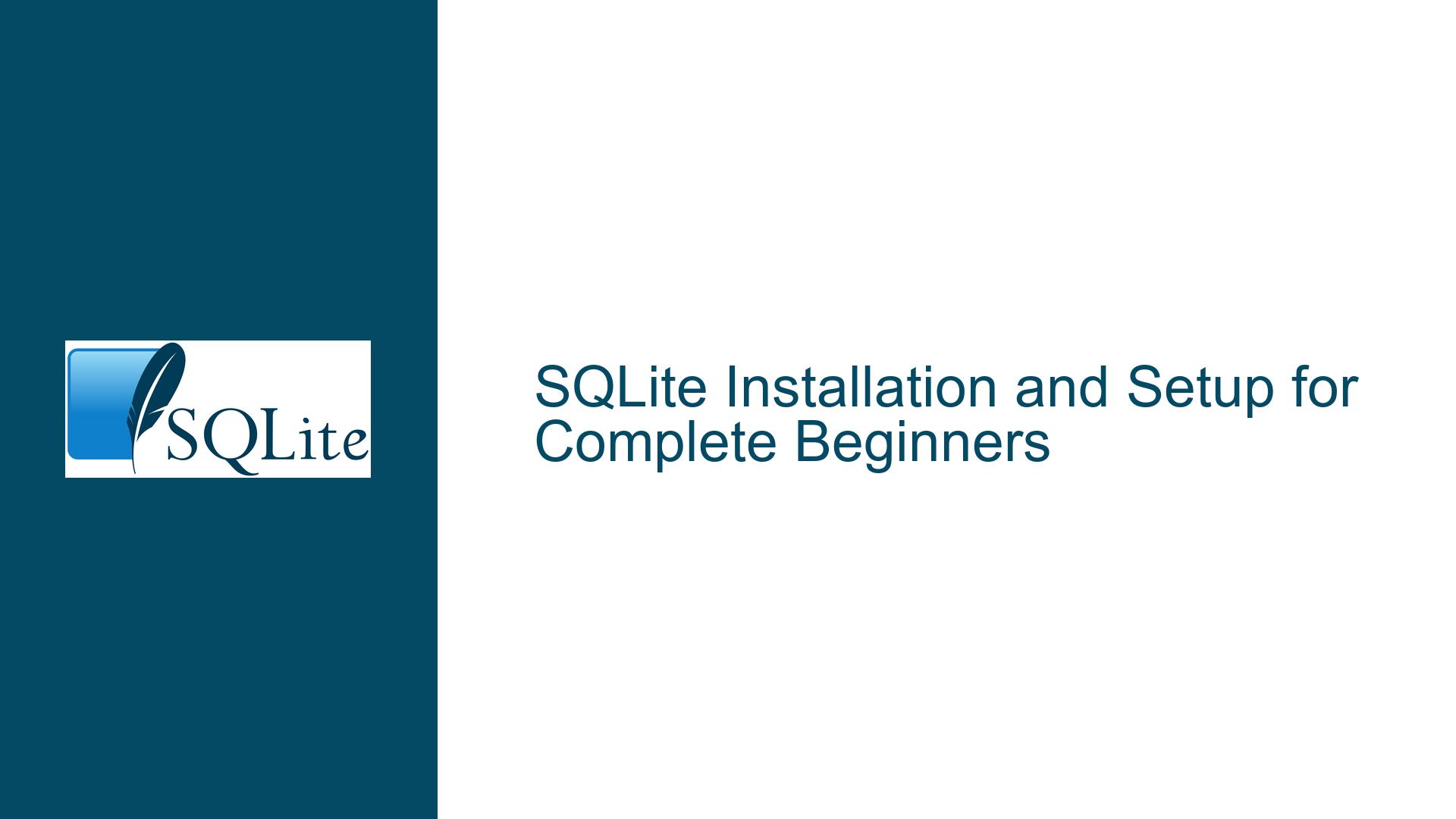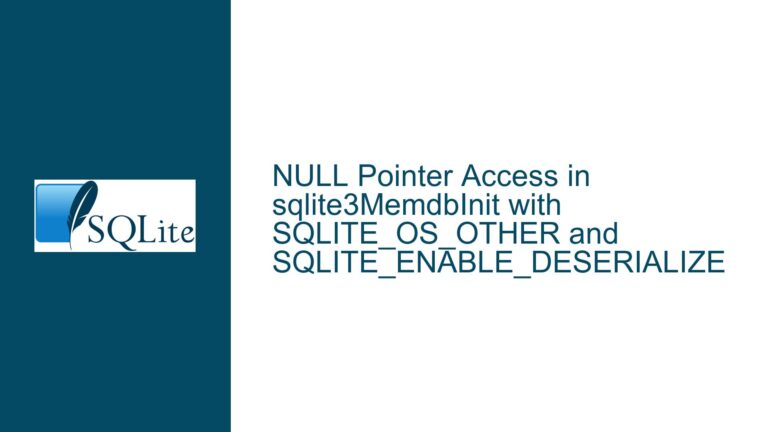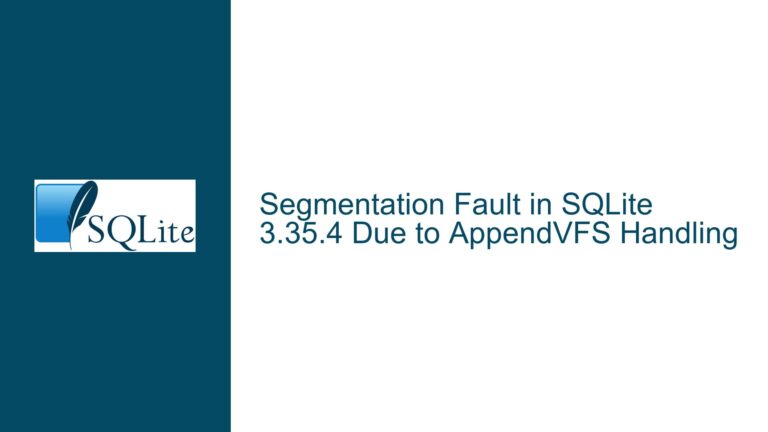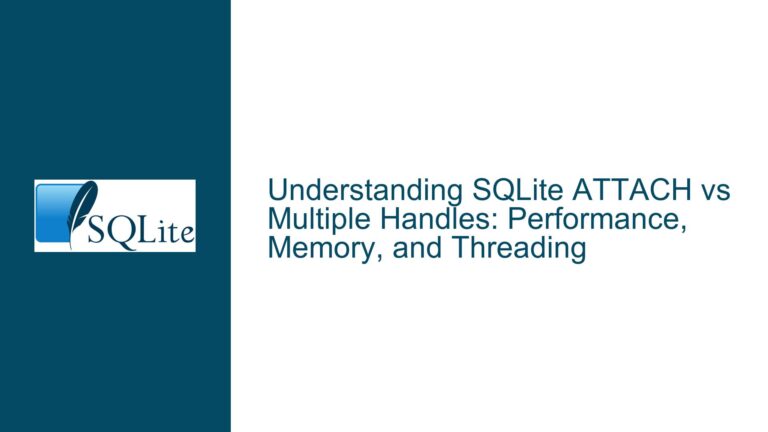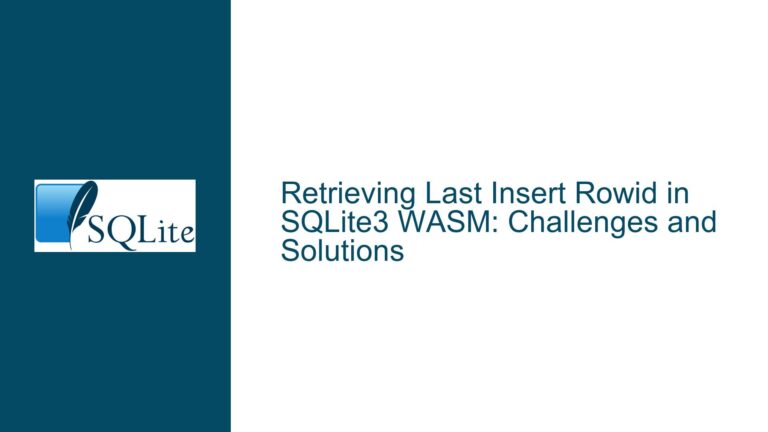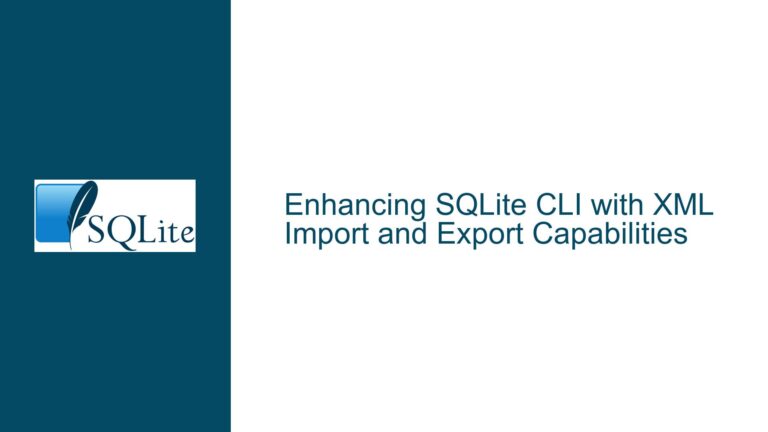SQLite Installation and Setup for Complete Beginners
Understanding SQLite Binaries and Installation Process
SQLite is a lightweight, serverless, self-contained SQL database engine that is widely used in applications ranging from embedded systems to web browsers. Unlike traditional database management systems, SQLite does not require a separate server process and stores the entire database as a single file. This simplicity makes it an excellent choice for beginners learning SQL or developers building lightweight applications. However, the installation process can be confusing for newcomers, especially those unfamiliar with the concepts of binaries, source code, and command-line tools.
The confusion often arises from the fact that SQLite is not a standalone application but a library that can be embedded into other programs. For beginners, the primary goal is usually to interact with SQLite using the command-line shell, which requires downloading and setting up the appropriate precompiled binary. The SQLite website provides precompiled binaries for various operating systems, but understanding how to download, configure, and use these binaries is not always straightforward.
The SQLite binary, often named sqlite3 (or sqlite3.exe on Windows), is a command-line tool that allows users to execute SQL commands, manage databases, and perform administrative tasks. To use this tool effectively, the binary must be placed in a directory that is included in the system’s PATH environment variable. This ensures that the sqlite3 command can be invoked from any terminal or command prompt window.
For example, on a Windows machine, the PATH environment variable contains a list of directories where the operating system looks for executable files. If the sqlite3.exe file is placed in one of these directories, users can simply type sqlite3 in the command prompt to start the SQLite shell. On Unix-based systems (such as Linux or macOS), the process is similar, but the binary must also be marked as executable using the chmod +x command.
Common Misconceptions About SQLite Installation
One of the most common misconceptions about SQLite is that it requires a complex installation process similar to other database systems like MySQL or PostgreSQL. In reality, SQLite is designed to be as simple as possible, with no installation required in the traditional sense. The precompiled binaries are ready to use out of the box, and there is no need for a centralized installation or configuration.
Another source of confusion is the distinction between the SQLite library and the SQLite command-line shell. The library is a set of functions that developers can use to integrate SQLite into their applications, while the command-line shell is a standalone tool for interacting with SQLite databases. Beginners often conflate these two components, leading to frustration when they cannot find a graphical user interface (GUI) or an installer for the command-line tool.
Additionally, some users mistakenly believe that SQLite is already installed on their system. While it is true that many operating systems and programming languages include SQLite by default, this is not universally true. For example, Python includes SQLite support in its standard library, but the command-line shell is not included. Similarly, some Linux distributions may include SQLite as part of their package repositories, but the version provided may be outdated or missing certain features.
Step-by-Step Guide to Downloading, Configuring, and Using SQLite
To address the challenges faced by beginners, this guide provides a detailed, step-by-step walkthrough of the SQLite installation and setup process. The steps are tailored for users who are new to SQLite and may not have prior experience with command-line tools or system configuration.
Step 1: Downloading the Correct Precompiled Binary
The first step is to download the appropriate precompiled binary for your operating system. Visit the official SQLite website (https://sqlite.org/download.html) and navigate to the "Precompiled Binaries" section. Here, you will find binaries for Windows, Linux, and macOS. Choose the binary that matches your operating system and architecture (32-bit or 64-bit).
For Windows users, the binary is typically named sqlite-tools-win32-x86-XXXXXXX.zip, where XXXXXXX represents the version number. Linux users should look for a file named sqlite-tools-linux-x86-XXXXXXX.zip, while macOS users will find a file named sqlite-tools-osx-x86-XXXXXXX.zip.
Step 2: Extracting the Binary
Once the download is complete, extract the contents of the ZIP file to a directory of your choice. On Windows, you can use the built-in extraction tool or a third-party application like 7-Zip. On Linux and macOS, you can use the unzip command in the terminal.
After extraction, you should see a file named sqlite3 (or sqlite3.exe on Windows). This is the SQLite command-line shell executable. You may also see additional files, such as sqldiff and sqlite3_analyzer, which are utility tools for comparing databases and analyzing database files, respectively.
Step 3: Adding SQLite to the System PATH
To make the sqlite3 command accessible from any terminal or command prompt window, you need to add the directory containing the sqlite3 binary to your system’s PATH environment variable. The process for doing this varies depending on your operating system.
Windows
- Open the Start menu and search for "Environment Variables."
- Click on "Edit the system environment variables."
- In the System Properties window, click the "Environment Variables" button.
- In the Environment Variables window, find the "Path" variable in the "System variables" section and click "Edit."
- Click "New" and enter the full path to the directory containing the
sqlite3.exefile. - Click "OK" to save the changes and close all windows.
Linux and macOS
- Open a terminal window.
- Determine the full path to the directory containing the
sqlite3binary. For example, if you extracted the files to/home/username/sqlite-tools, this is the path you will use. - Open your shell configuration file in a text editor. For most users, this will be
~/.bashrcor~/.zshrc. - Add the following line to the end of the file:
export PATH=$PATH:/home/username/sqlite-tools - Save the file and close the text editor.
- Run the following command to apply the changes:
source ~/.bashrc
Step 4: Verifying the Installation
To verify that SQLite is correctly installed and configured, open a terminal or command prompt window and type sqlite3. If everything is set up correctly, you should see the SQLite shell prompt, which looks like this:
SQLite version 3.XX.X 202X-XX-XX XX:XX:XX
Enter ".help" for usage hints.
Connected to a transient in-memory database.
Use ".open FILENAME" to reopen on a persistent database.
sqlite>
If you see this prompt, congratulations! You have successfully installed and configured SQLite. If you encounter an error, double-check that the sqlite3 binary is in the correct directory and that the directory is included in your system’s PATH.
Step 5: Using the SQLite Command-Line Shell
Now that SQLite is installed, you can start using the command-line shell to create and manage databases. Here are some basic commands to get you started:
Creating a Database: To create a new database, use the
.opencommand followed by the name of the database file. For example:sqlite> .open mydatabase.dbThis will create a new database file named
mydatabase.dbin the current directory. If the file already exists, it will be opened.Executing SQL Commands: You can execute SQL commands directly in the SQLite shell. For example, to create a table, you can use the following command:
sqlite> CREATE TABLE users (id INTEGER PRIMARY KEY, name TEXT, email TEXT);This creates a table named
userswith three columns:id,name, andemail.Viewing Table Schema: To view the schema of a table, use the
.schemacommand followed by the table name:sqlite> .schema usersThis will display the SQL statement used to create the
userstable.Inserting Data: To insert data into a table, use the
INSERT INTOcommand:sqlite> INSERT INTO users (name, email) VALUES ('John Doe', '[email protected]');This inserts a new row into the
userstable.Querying Data: To retrieve data from a table, use the
SELECTcommand:sqlite> SELECT * FROM users;This will display all rows in the
userstable.Exiting the Shell: To exit the SQLite shell, use the
.exitcommand or pressCtrl+D.
Step 6: Exploring Advanced Features
Once you are comfortable with the basics, you can explore some of the advanced features of the SQLite command-line shell. For example:
Importing and Exporting Data: SQLite provides commands for importing data from CSV files and exporting data to various formats. For example, to import data from a CSV file, you can use the
.importcommand:sqlite> .mode csv sqlite> .import data.csv mytableThis imports data from
data.csvinto a table namedmytable.Using Transactions: SQLite supports transactions, which allow you to group multiple SQL commands into a single atomic operation. To start a transaction, use the
BEGINcommand:sqlite> BEGIN; sqlite> INSERT INTO users (name, email) VALUES ('Jane Doe', '[email protected]'); sqlite> COMMIT;This ensures that the
INSERTcommand is executed as part of a transaction.Configuring the Shell: The SQLite shell can be customized using various dot-commands. For example, you can change the output format using the
.modecommand:sqlite> .mode column sqlite> SELECT * FROM users;This displays the query results in a columnar format.
Step 7: Troubleshooting Common Issues
Even with a clear guide, beginners may encounter issues when setting up SQLite. Here are some common problems and their solutions:
Command Not Found: If you receive a "command not found" error when trying to run
sqlite3, it means the binary is not in your system’s PATH. Double-check that the directory containingsqlite3is included in the PATH environment variable.Permission Denied: On Unix-based systems, you may encounter a "permission denied" error if the
sqlite3binary is not marked as executable. Use thechmod +xcommand to make the binary executable:chmod +x /path/to/sqlite3Database Locked: If you encounter a "database is locked" error, it means another process is accessing the database file. Ensure that no other applications or processes are using the database.
Corrupted Database: In rare cases, a database file may become corrupted, especially if the system crashes during a write operation. SQLite provides tools like
sqlite3_analyzerandsqldiffto diagnose and repair corrupted databases.
Step 8: Learning Resources and Next Steps
Once you have successfully installed and configured SQLite, the next step is to deepen your understanding of SQL and database management. Here are some resources to help you get started:
Official SQLite Documentation: The SQLite website (https://sqlite.org/docs.html) provides comprehensive documentation, including a detailed guide to the SQL language and the SQLite command-line shell.
Interactive SQL Tutorials: Websites like SQLZoo (https://sqlzoo.net/) and W3Schools (https://www.w3schools.com/sql/) offer interactive SQL tutorials that are perfect for beginners.
Books: In addition to "Learn SQL the Hard Way," consider reading "SQLite Programming" by Jay A. Kreibich or "Using SQLite" by Jay A. Kreibich for a deeper dive into SQLite.
Online Communities: Join online communities like the SQLite Forum (https://sqlite.org/forum) or Stack Overflow to ask questions and share knowledge with other SQLite users.
By following this guide, you should be able to successfully download, install, and configure SQLite on your machine. With practice, you will become proficient in using the SQLite command-line shell and managing databases effectively. Whether you are learning SQL for the first time or building a lightweight application, SQLite is a powerful and versatile tool that is well worth mastering.
